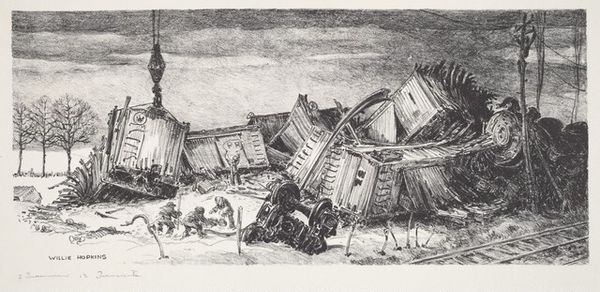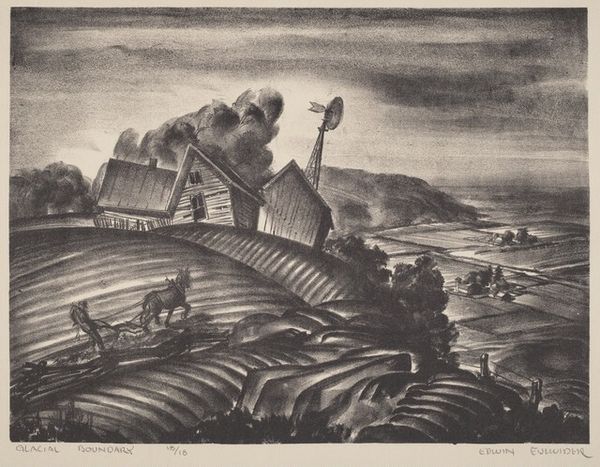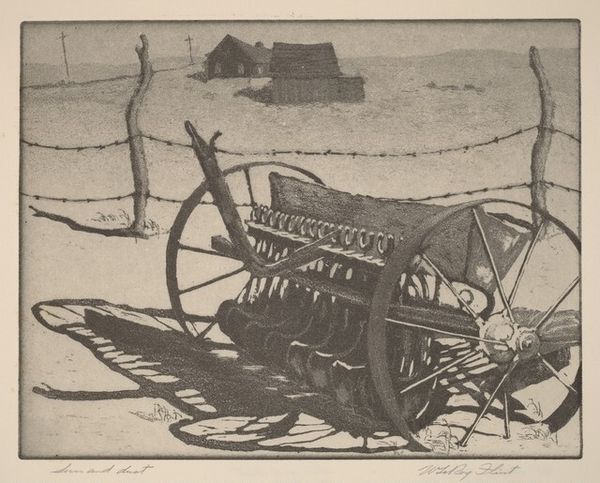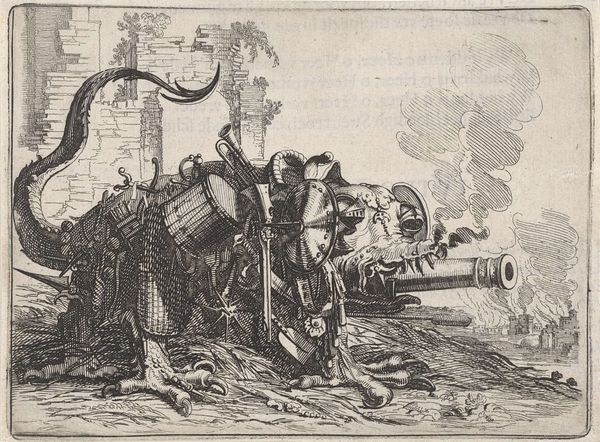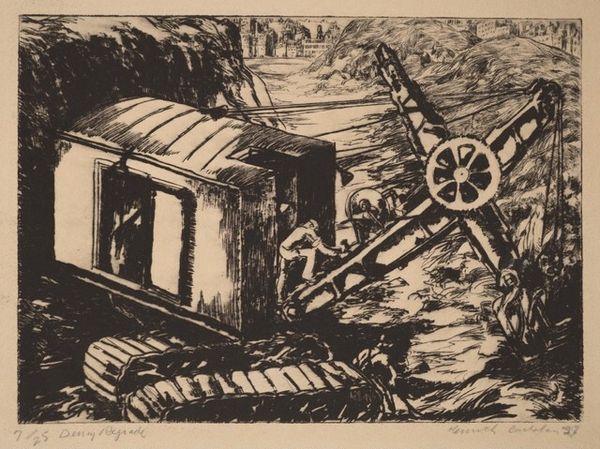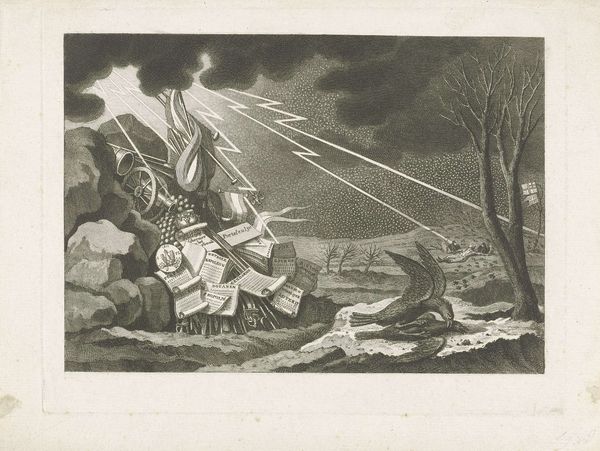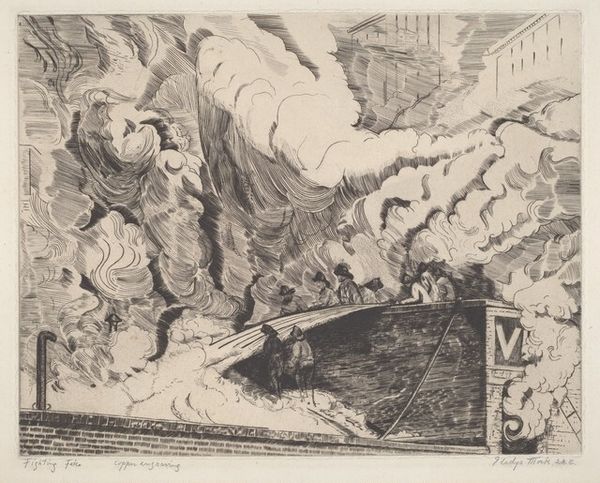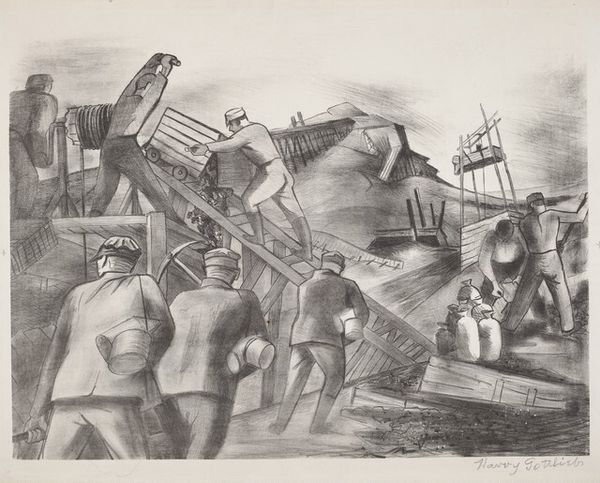
print, etching, pencil
# print
#
etching
#
landscape
#
caricature
#
pencil drawing
#
pencil
#
surrealism
#
surrealism
#
modernism
Dimensions: image: 283 x 279 mm sheet: 292 x 406 mm
Copyright: National Gallery of Art: CC0 1.0
Bernard Perlin made this print in 1939, using a technique called lithography. This is a printmaking process where an image is drawn on a flat stone or metal plate, then printed. The process allows for very fine lines and tonal gradations, as you can see in the sky and the foreground. The image depicts discarded tools and equipment – a wheelbarrow, a lantern, perhaps parts of a plow. It speaks to the hard labor of rural life, and the economic hardship that many Americans faced during the Great Depression. The discarded tools suggest fields left unplowed, and lives disrupted. Lithography democratized art production. It's a relatively accessible technique, allowing artists to create multiple originals. Here, the means of production – the lithographic process – mirrors the themes of labor and industry that Perlin explores. The ‘Sad Landscape’ reminds us that artworks are not just about what they depict, but also about how they are made, and the social context in which they were created.
Comments
No comments
Be the first to comment and join the conversation on the ultimate creative platform.
